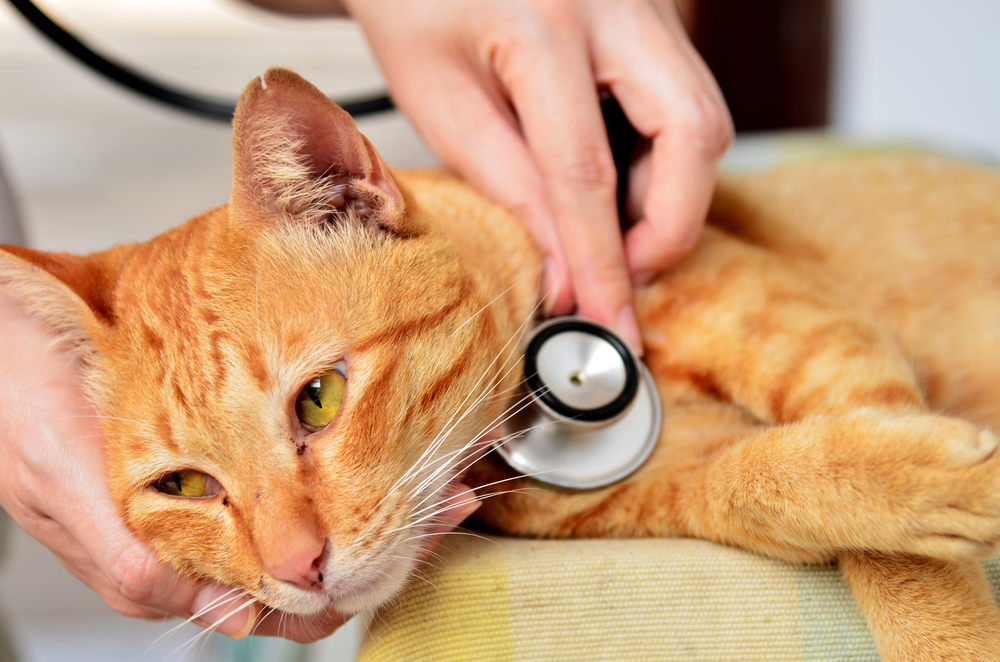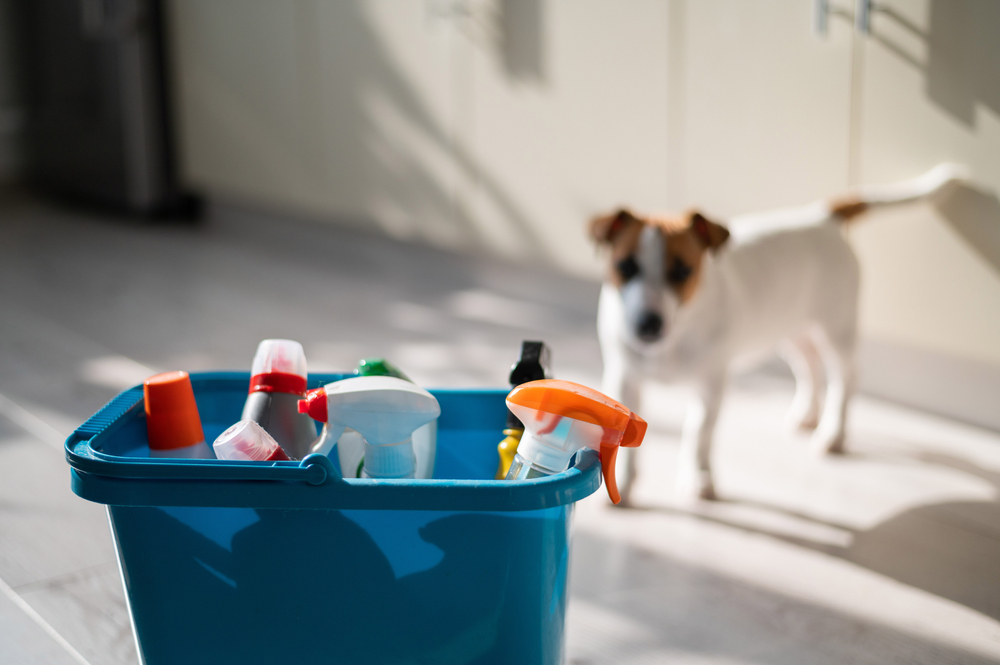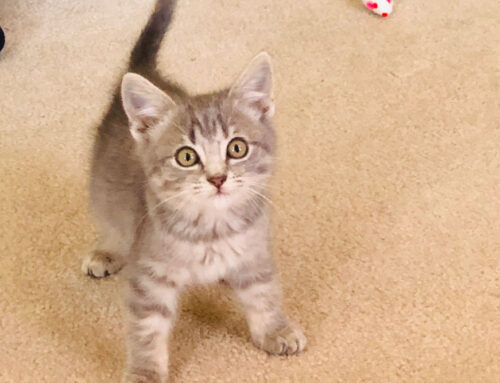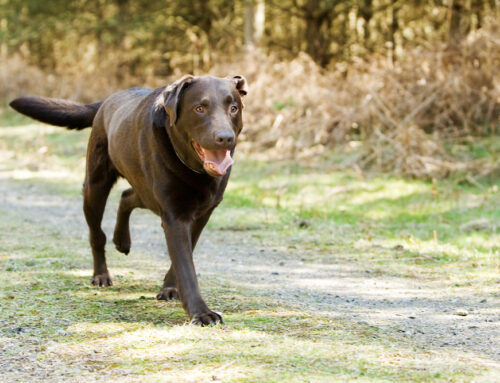Toxic substances are plentiful in your home, garage, and yard, and your four-legged friend has a good chance of sniffing them out if you aren’t careful. Knowing which potential poisons you keep in your home—and how to prevent your pet’s access—is crucial for keeping your furry pal safe from danger. Here are five tips to prevent poisoning in your pet.
#1: Identify common pet toxins in your home
A number of hazardous items are kept in most homes, and the following are the most common toxins your pet is likely to run across:
- Over-the-counter (OTC) medications — Unwitting owners often give their OTC medications to their injured or ill pets. While some medications can be pet-safe, cats and dogs metabolize medications differently than people, and certain medications can be fatal. Acetaminophen, ibuprofen, cough syrup, cold medicine, vitamins, and supplements can all cause serious health issues in pets.
- Human prescription medications — When taking your medication, be careful not to drop a pill in front of your waiting pet. The most common human prescription medications that pets ingest include cardiac, antidepressant, and ADHD medications. Pets can ferret these prescription products from purses, coat pockets, and backpacks, so ensure they are stored out of reach.
- Veterinary products — While your pet’s medications are safe as prescribed, your furry pal may take matters into their own paws and sniff out their tasty, chewable medications and supplements. If your pet eats their whole stash of chewable heartworm, flea, and tick preventives, or bag of calming chews, they can experience adverse effects.
- Foods — Some of your favorite snacks can be toxic to your pet, so avoid sharing chocolate, grapes, raisins, and macadamia nuts. Sugar-free candies, peanut butter, and other sweet treats that contain xylitol are extremely toxic to dogs, so read the label carefully before filling your pup’s Kong with peanut butter.
- Household chemicals — Bleach, toilet bowl cleaner, drain clog dissolver, and other cleaning supplies can significantly harm your pet. The most serious poisonings occur when your pet drinks spilled liquids, but pets can also become ill if they walk across a freshly mopped floor and then lick the chemicals from their paws. Fumes from cleaning products can also make your pet ill.
#2: Locate common pet toxins in your garage and yard
Garages can turn into dusty places that hide old containers and various pest-control products that can prove toxic to pets, so ensure you safely store poisonous substances out of your pet’s reach. Check regularly for leaking containers of antifreeze, paint, and cleaning chemicals, and use traps rather than rodenticides if your pet spends time in your garage.
Yards and gardens also hold dangers for pets, especially in the forms of organic fertilizers and freshly applied herbicides. The plants themselves can also be hazardous to your pet, as many flowers and foliage are toxic to cats and dogs. Some of the most notorious toxic plants include:
- Lilies
- Chrysanthemums
- Tulips
- Azaleas
- Daffodils
- Foxglove
- Autumn crocuses
- Geraniums
#3: Watch for general poisoning signs in your pet
Since so many various toxins can harm your pet, determining whether your four-legged friend has been poisoned by clinical signs alone can be difficult. Typically, pet owners will spot their pet getting into a toxin, or they may come home and find a chewed-up pill bottle on the floor. However, knowing the signs if your pet has come in contact with a toxin can save their life. Watch for:
- Vomiting
- Diarrhea
- Drooling
- Lethargy or depression
- Decreased appetite
- Excessive thirst
- Difficulty breathing
- Loss of balance
- Bleeding issues (e.g., bruising, blood in stool, pale gums, nosebleeds)
- Irregular heartbeat
- Muscle rigidity
- Seizures
Remember, these signs are not the full list of issues your pet may display after toxin exposure, but they include the most common problems caused by poisonous substances.
#4: Pet-proof your home
Making your home, garage, and yard as safe as possible for your pet is key to poisoning prevention, so use the following pet-proofing methods:
- Install child locks on drawers and cabinets
- Close doors behind you to keep your pet out
- Place baby gates where needed
- Purchase a trash can with a locking lid
- Hang up purses, jackets, backpacks, and lunchboxes
- Store food in secure spots
- Restrict your pet’s access to chemically treated yard areas
#5: Know how to administer pet poisoning first aid

When your pet ingests a toxin, immediately inducing vomiting is likely your first instinct, but this can do more harm than good. Do not induce vomiting:
- If your pet has ingested a cleaning product, strong acid, petroleum product, or an alkali (e.g., bleach)
- If your pet ingested the toxin more than two hours ago
- If your pet is semi-conscious, unconscious, or convulsing
Inducing vomiting at home is generally contraindicated, as most methods, including administering hydrogen peroxide, can cause harmful side effects. Vomiting can be safely induced with appropriate medications at our veterinary hospital or at a veterinary emergency hospital.
If a poison comes in contact with your pet’s eyes or skin, follow the label directions for human exposure. The directions will likely instruct you to flush the affected area well with water and decontaminate the skin with plenty of soap.
To determine the necessary steps if your pet is poisoned, contact an animal poison control hotline. Their expert veterinary toxicologists will instruct you on the best course of action, which likely will include heading immediately to the nearest veterinary hospital, or watching your pet for gastrointestinal upset.
Pets don’t read the textbooks and know what items in their homes are toxic and best left alone. If your furry pal encounters a toxic substance, contact our Liberty Veterinary Hospital team for help.








Leave A Comment